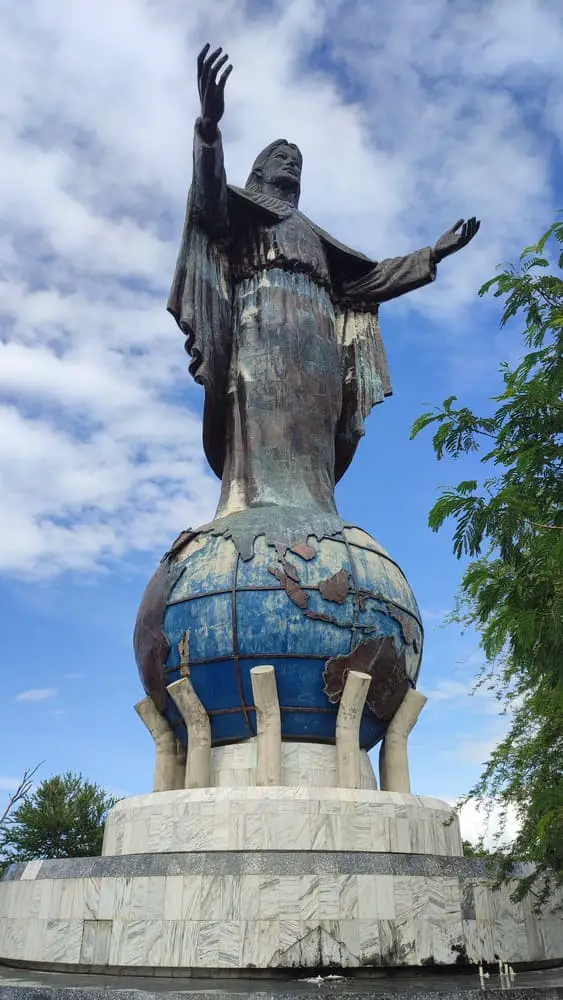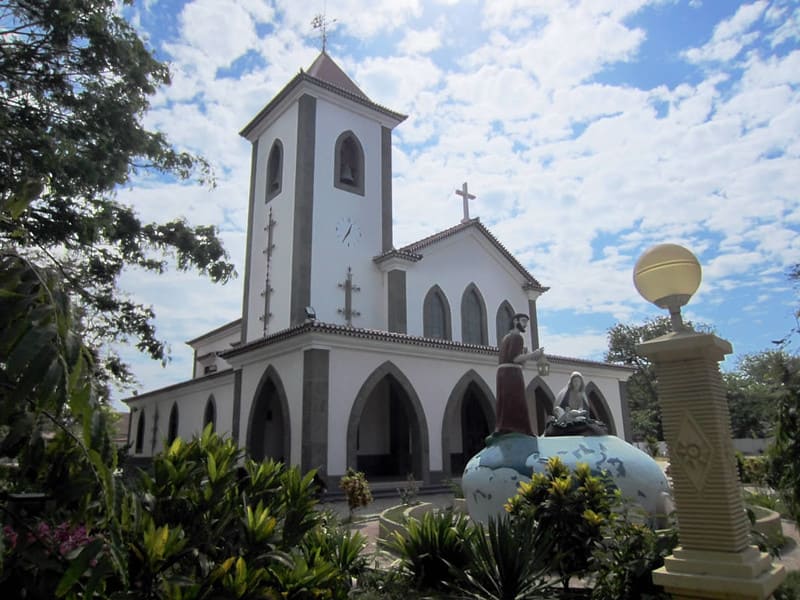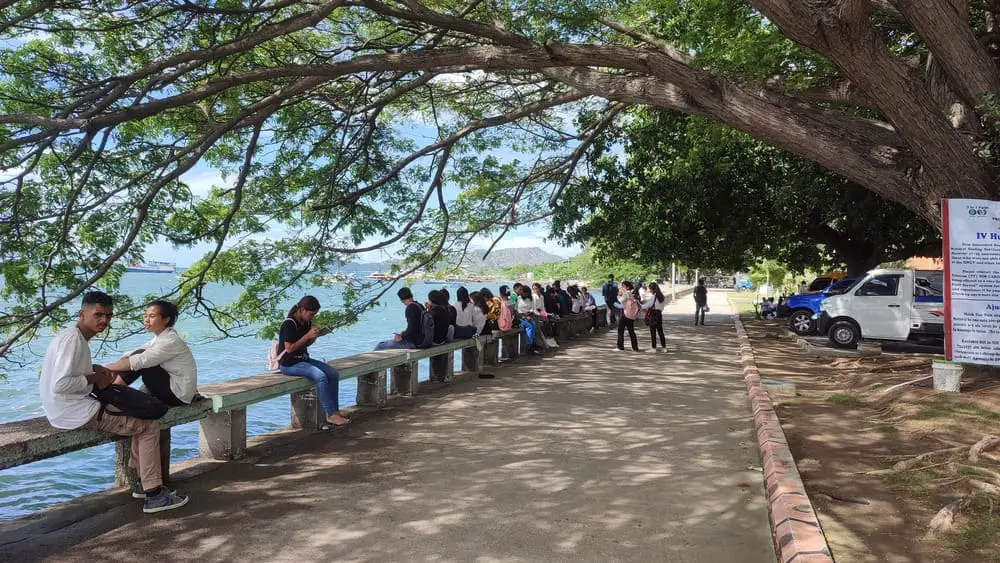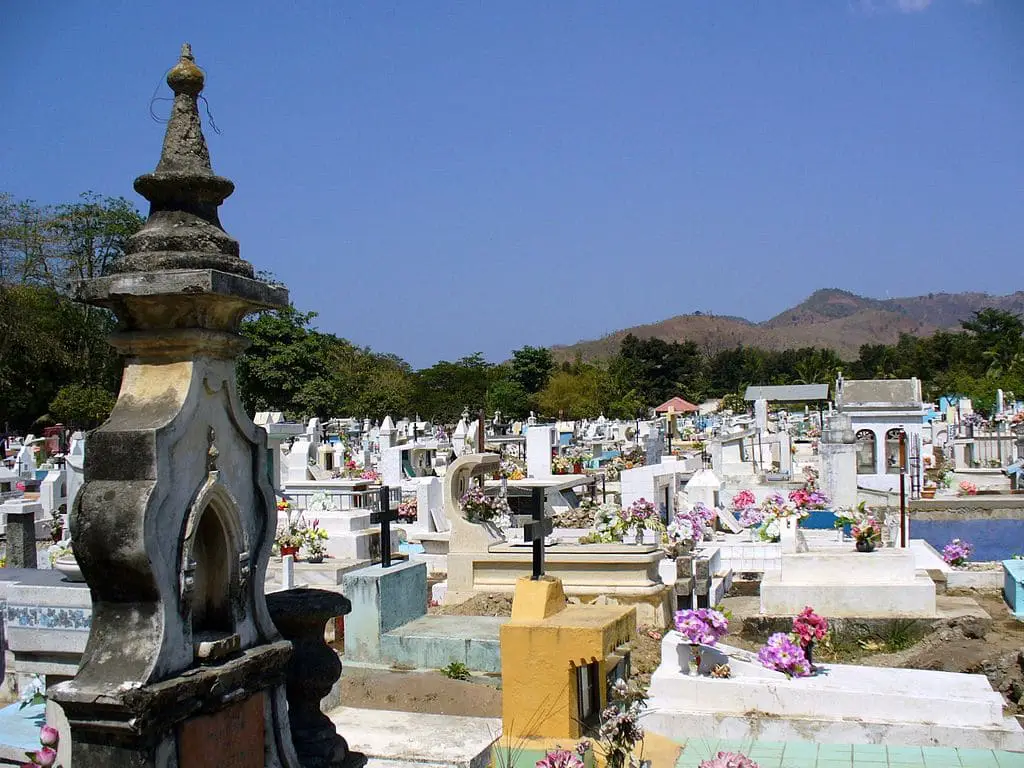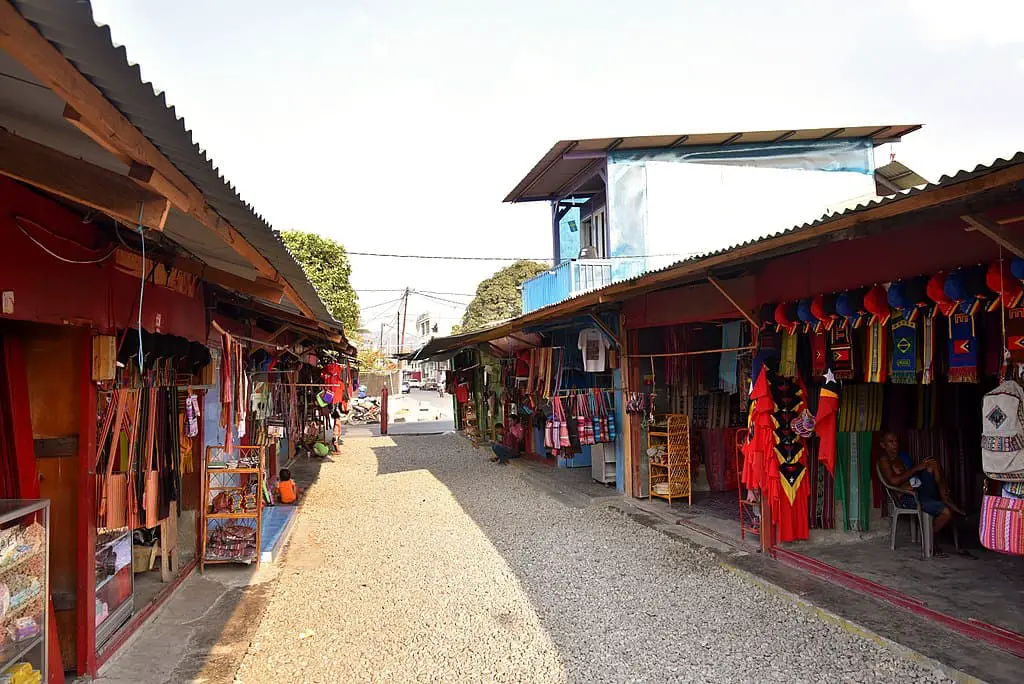The 15 Best Things to Do in Dili, Timor Leste
This post may contain affiliate links. If you make a purchase using one of these links, I may receive a small reward at no extra cost to you. See my Disclosure Policy for more information.
The biggest city in the smallest country in Southeast Asia (population-wise) – Dili! Is it interesting? Is it worth it to visit?
To be frank, I didn’t have these questions before I came. The sheer isolation of Timor Leste was enough of an appeal to make me travel there (see how I did it cheaply by bus from Kupang here).
Once in Dili, I learned that most of Dili is younger than me (and I do still consider myself somewhat young at 30-something). Destroyed a couple of times in the past decades, Dili’s survival can be attributed to the Timorese perseverance, piety, and strength of will.

What does that mean about interesting places in Dili? Are there any?
Well, yes, there are some. Do not expect super exciting events, glamorous boulevards, big malls, or a buzzing local scene. Dili is laid-back, though it isn’t a seaside resort. Dili is hard-working, though it isn’t another Singapore. Dili is… you know what, check out my selection of the best places to visit there and make up your own mind!
Or better yet, visit and let me know what you think!
1. Cristo Rei of Dili
Timor Leste is a very religious country, with 96% of people following Catholicism and almost everyone attending the Sunday Mass at their local church. It’s no wonder that there is a fair share of religious sites in the capital Dili too.
One of the most iconic landmarks in Dili is the Cristo Rei statue, which stands tall at 27 meters high on a hill overlooking the city, mimicking the famous Christ the Redeemer statue in Rio de Janeiro. It got a brush-up in anticipation of the Pope’s 2024 visit to Timor Leste.
The Jesus statue was a gift given by Indonesia to the Timorese people in 1996 by President Suharto. Back then Timor Leste was an Indonesian Province (although de facto a brutal military occupation, so “gift” may not be entirely accurate).
While initially seen as a symbol of Indonesian oppression, after independence the Timorese changed their stance and kept the statue. Who would dare destroy a statue of Jesus?
Moreover, it’s become a popular place for recreation for Dili locals. I saw more than 20 people running up and down the stairs as a form of endurance training.
To climb up close to the statue, you must pass the Way of the Cross – 14 stations that mark moments of Jesus’ day on his crucifixion.
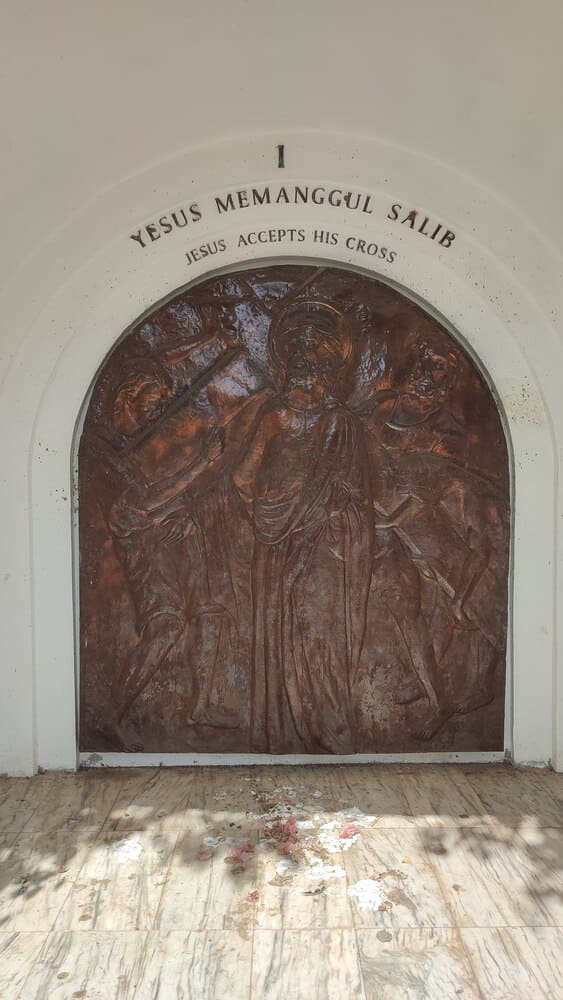
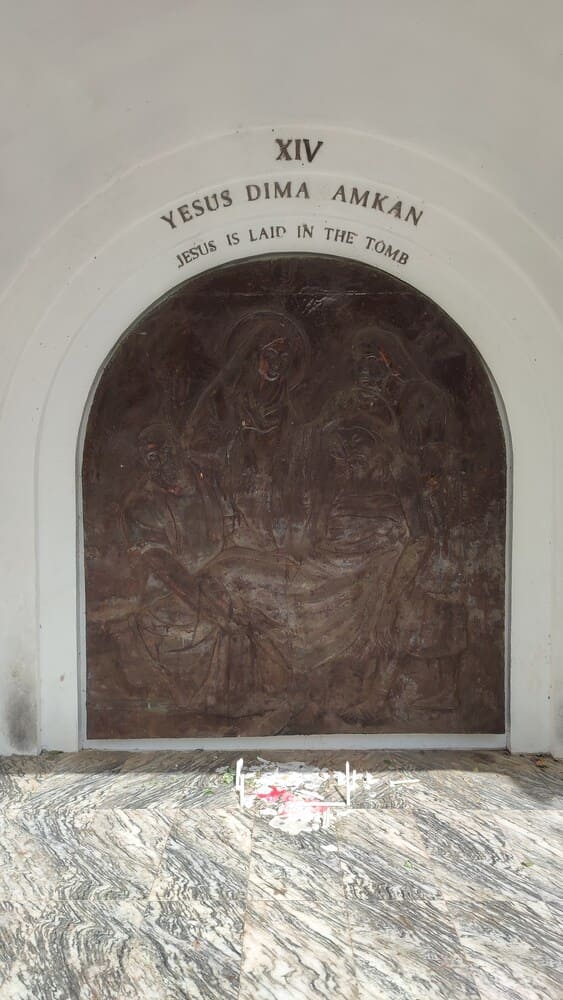
The reward? Views of Dili on one side and a beach with a funny name (keep reading to find out) on the other.
To get to Cristo Rei, take microlet #12 from Largo de Lecidere.
2. Motael Church
Motael Church is the oldest Roman Catholic Church in all of Timor Leste and is located in the heart of Dili, almost at the beach.
The Church was first built in the 18th century but was destroyed by the Japanese occupiers during the Second World War. The current building dates back to 1955.
Motael Church has a very Portuguese feel but hides a bloody history. In 1991 a demonstration against the Indonesians started in front of the church, where two weeks earlier an activist was shot dead.
The demonstration would a few hours later finish with the Santa Cruz Massacre and 271 killed – a turning event in Timorese history leading to its independence a decade later.
3. Dili Cathedral
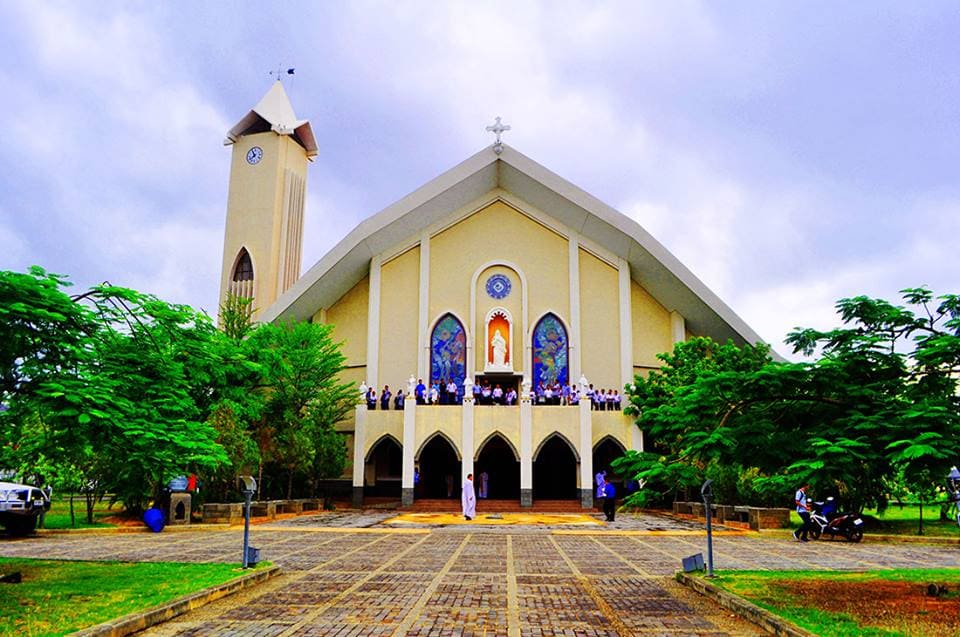
The Immaculate Conception Metropolitan Cathedral, commonly known as the Dili Cathedral is the second biggest cathedral in Southeast Asia after the one in Manila.
It was inaugurated on 2 November 1988 and consecrated by none other than Pope John Paul II in October 1989. You can see Pope John Paul II’s signature at the main entrance of the cathedral.
Pope Francis visited the Cathedral in September 2024.
Speaking of religion and Popes…
4. Statue of Pope John Paul II
There’s a memorial dedicated to the third longest-serving Pope in history in the west of Dili.
Erected in 2008, the 6-meter statue faces Cristo Rei on the other side of Dili, creating what I call a circle of protection around the capital.
Microlets #10 (from the city center) and #11 (from Comoro Bridge) go to Tasitolu, the district of Dili where the statue is.
5. Museum of East Timorese Resistance
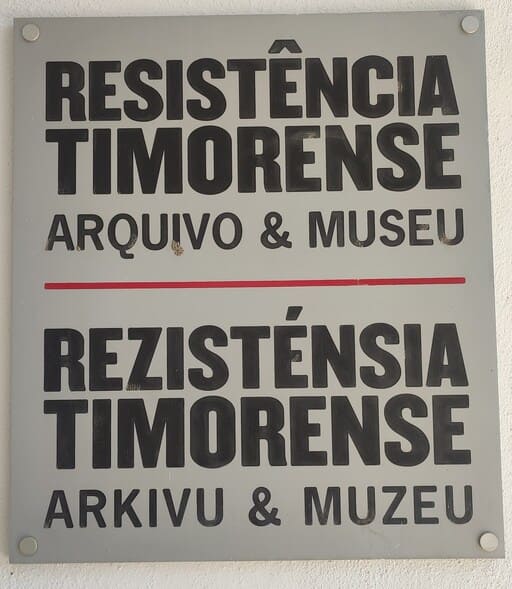
The Resistance Museum in Dili is a must-see for anyone who is even remotely interested in learning about the troubled and extremely bloody history of Timor Leste.
The museum also doubles as an archive for the hundreds of letters, newspapers, resistance communications, meeting notes, etc. about Timorese resistance during the Indonesian Occupation.
The exhibition is incredibly well made! It’s divided and organized by years and includes hundreds of pieces of primary evidence. It only costs 1$ to enter and you can easily spend 2-3 hours there.
The museum is open from 9 AM to 4:30 PM from Tuesday to Saturday and closed on Sundays and Mondays.
It’s in a very central location behind the Palacio do Governo, so you don’t need a microlet to get there – just walk.
6. Centro Audiovisual Max Stahl Timor-Leste
Opposite the Resistance Museum is the Audiovisual Center dedicated to Max Stahl – the brave journalist who filmed the Santa Cruz Massacre, buried the footage to hide it from the Indonesians, then smuggled it out of the country to show the world the committed atrocities.
You are free to browse the archive and there are English language clips and films available to watch.
7. Chega! Exhibition and Balide Prison
To complete your lesson on the history of Timor Leste, head to the Chega! Exhibition, housed in the former Balide Prison.
Chega is a word in Portuguese meaning “stop” or “no more“.
Balide Prison was where the Indonesian occupying forces interrogated, tortured, and executed Timorese, who they believed were involved in the resistance struggle for independence.
It’s complete with a lot of testimonials, letters, and picture material. Tear-inducing and very humbling.
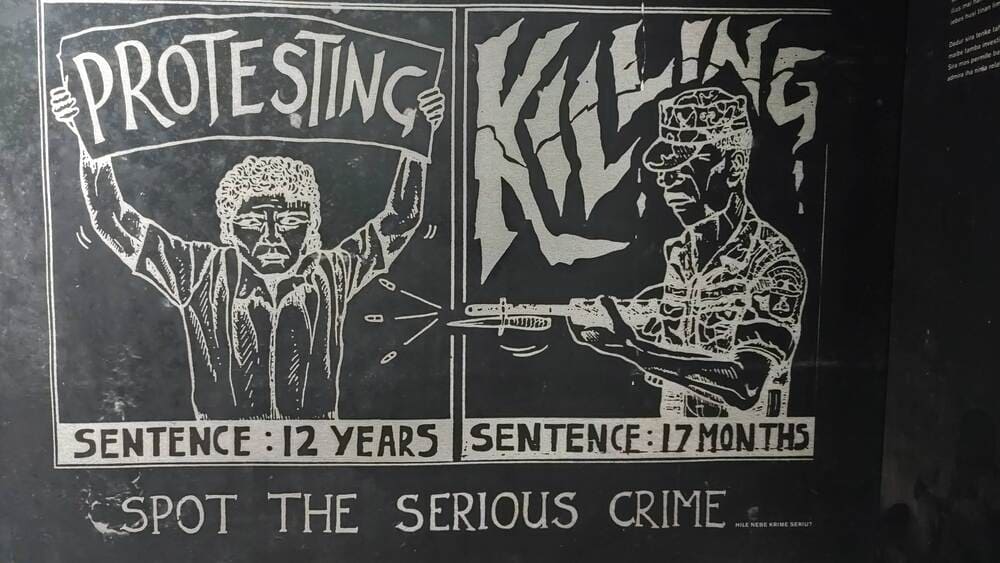
The museum is open from 8:30 AM to 5:30 PM during the week but closed on Saturday and Sunday and.
It has no entrance fee, though donations are appreciated.
Microlet #1 passes in front of the museum but you can walk there as it’s not too far from the Resistance Museum.
8. Xanana Gusmão Reading Room
Dedicated to the former resistance leader and president of Timor-Leste Xanana Gusmão, this small museum has paintings, medals, some posters about WW2, and a small library.
Opening hours are Monday to Friday, 9 AM to 5 PM, and Saturday, 9 AM to 3 PM.
Free of charge, but donations are welcome by the volunteers.
9. Dare Memorial Museum and Cafe
Overlooking Dili from the nearby hills to the south, the Dare Memorial is more of a commemoration of Timor Leste’s role in WW2, than a proper museum. It pays respect to the Australian and Timorese soldiers who fought on the island against the Japanese.
Even though it is lackluster as a museum, it’s a good spot to drink strong Timorese coffee and enjoy the sunset with views of Dili from above.
It’s only open on the weekend between 8:30 and 18:00.
There’s no public transport that goes to the cafe, but you can either take a taxi or hitchhike.
10. Palácio do Governo
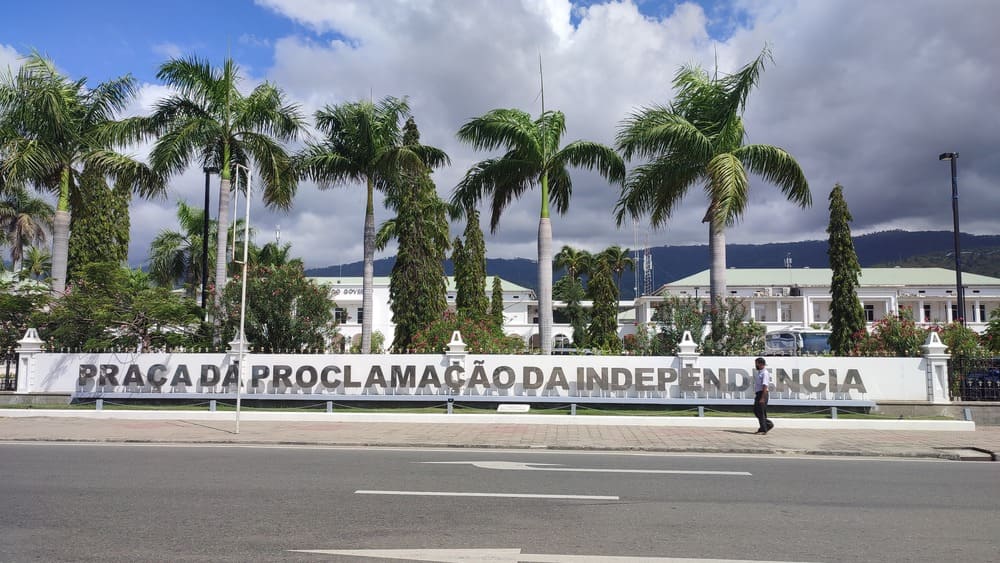
In English – the Government’s Palace. This is the official workplace of the Prime Minister of Timor Leste and a big part of the administration and governing bodies of the country.
It was built in the early 1950s and follows the architectural style of official buildings within the Portuguese Empire.
You can enter the Palace from the left gate and see the dinosaur fossil brought from Mongolia.
In front of the Palace, next to the sea is a popular waterfront where young Dilians go to relax and socialize. Even though it’s called “Palacio Beach”, it’s not exactly suitable for sunbathing.
11. Santa Cruz Cemetery + Taman Makam Pahlawan Seroja (Indonesian Military Cemetery)
The Santa Cruz Cemetery was the site of the Dili Massacre on 12 November 1991 when the Indonesian military killed 271 people for protesting the occupation.
There isn’t any information there, so I recommend you visit the Resistance Museum first to get an overview. Only visit the cemetery if you have a deep interest in what happened in Timor during the 1990s.
The cemetery is very full and walking between the graves is at times impossible.
Santa Cruz Cemetery is close to the Chega! Exhibition (15 min walk), but if you’re coming from the center, microlets #7 and #1 will take you there.
Located just across from Santa Cruz Cemetery is the only Indonesian Cemetery outside of Indonesia.
Taman Makam Pahlawan Seroja (translates as Indonesian Military Cemetery) was created in the 1970s when Timor Leste was still a province of Indonesia. It is a bit surprising that it has survived after Independence, given the brutal nature of the occupation.
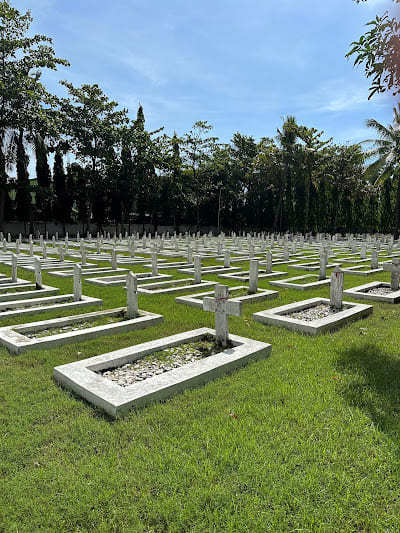
The difference between the two cemeteries is striking. While the graves in Santa Cruz are haphazard and even overlapping, the graves in the Taman Makam Pahlawan Seroja are perfectly ordered in rows and columns.
12. Tais Market
The tais is the traditional textile of Timor Leste and is considered an intangible cultural heritage by UNESCO. Tais of different colors and motifs are used in various Timorese ceremonies, festivals, and traditions.
The tais are more than just clothes – they show social class and belonging to a particular group.
The tais are handwoven, and made of cotton dyed with natural ingredients. The art of making tais is almost exclusively reserved for women and passed down from mother to daughter.
If you can only take one souvenir with you from Timor Leste, it should be a traditional tais. The best place to buy authentic tais in Dili is the Tais Market, tucked away in a small street close to Hotel Timor [map].
13. Alola Esperansa Foundation
An alternative to shopping at the Tais Market is to go to the Alola Esperansa Foundation and check out the local production center. It is a non-profit organization that helps local women by teaching them how to hand-weave Tais.
Alola Esperansa has two parts – production and retail. You can watch local women work and produce beautiful Tais or go to the next hall to purchase any of the ready-to-wear fabrics.
They also sell virgin coconut oil, pottery, baskets and bags, wallets and accessories, bookmarks, candles, postcards, handmade jewelry, and even Timorese coffee.
14. Jesus Backside Beach
Remember when I said that on the other side of Christo Rei of Dili was a beach with a funny name? This is it! Don’t you dare laugh!
The proper name of this beach is Dolok Oan Beach, but since it’s right behind Cristo Rei of Dili, people have started calling it the Jesus Backside Beach.
It’s also known as the Praia dos Portugueses as this is where Portuguese officials liked to relax before 1975 when Timor Leste was part of the Empire.
The beach has white sand and azure water and is easily reachable by microlet #12 and a 20-30 minute walk to the other side of the Cristo Rei Peninsula.
15. Cristo Rei Beach
On the other side is the more popular Cristo Rei Beach. Most locals go to this beach and you may see a family or two having a picnic somewhere on it. An occasional coconut vendor may help you combat the thirst.
Every Friday and Saturday night, after sunset, there is a free screening of a movie right on the beach next to the Beachside Cafe.
How to travel around Dili
The best way to travel inside Dili is to use the microlets. There are 12 lines, each recognizable by its number.
Riding in a microlet is an experience on its own. You know what… make it 16 things to do in Dili with riding a microlet as number 1!
All microlets are painted differently, have different interiors and the drivers’ taste in music is always different (although mostly Brazilian rhythms for some reason).
To hail a microlet wave your hand up and down and to get off tap a coin on the metal railing inside. All rides cost 0.25$ regardless of distance.
You can check the microlet routes here.
Where and What to Eat in Dili
Being the capital and biggest city, Dili has no shortage of places to eat.
If you’re on a budget, you can try the smaller warung-style eateries serving fried fish or chicken, rice, and the traditional lalapan (rice with vegetables).
If you’re into street food you can check out the beach barbecue stands that pop up near Largo Lecidere in the evening to surprise you with just how tasty a 0.25$ meat skewer can be. Similar skewers are prepared in the night market near Timor Plaza.
If you want something more akin to fine dining, then there are a few restaurants that will satisfy your hunger for exquisite local food. Such a restaurant is Restaurante Tavirense.
Some of the foods you should try in Dili include:
- Batar Daan: rice with pumpkin and beans. Odd, but tasty;
- Ikan bakar or Ikan sabuko: fried fish, a Dili specialty (pictured above)
- Feijoada: the famous Portuguese dish made with pork and beans;
- Pastel de nata: Another Portuguese remnant, but nobody is mad – it’s a delicious dessert!
Where to Stay in Dili
Perhaps surprisingly, Dili is not a cheap place to stay!
Well, it isn’t super expensive either, but also not as cheap as nearby Indonesia or its ASEAN brothers Thailand, Vietnam, and Laos either.
This is so because of the constant influx of UN personnel that fill up the rooms and keep the prices high year-round.
There are few hostels in Dili and they cost 15-20$ per night. There are many more hotels, with prices between 30-80$ for a double room.
Check out my recommendations depending on your budget below:
I can recommend DaTerra Hostel with three thumbs up if I had a third hand. Everything there is clean and orderly, the place has a chilled vibe, and the whole hostel feels like a home away from home. It’s next to the beach and costs only 15$!
Timor Lodge offers everything you need for a relaxing stay – an outdoor pool, fitness, pool tables, a nice garden area, and even a barbecue! It’s not that expensive either – double rooms go for about 55$.
There is one emblematic hotel in Dili and it’s Hotel Timor. As a 4-star hotel, it has every amenity you can think of (remember though that you’re still in Timor Leste, not Dubai) and is as luxurious as they come in East Timor. Double rooms start from 105$.
Where to go after Dili
Check out my complete guide to traveling to Timor Leste for notable places to go, activities to partake in, and all the practical information you need in the country.
A popular next stop after Dili is Baucau, the second biggest city in Timor Leste. From Baucau, you can go south to Viqueque or further east towards Com, Lospalos, and the mythical Jaco Island.
Another direction you can take from Dili is to go south. You can go to Maubisse, Hato Buillico, hike Mount Ramelau, the highest point in East Timor (also called Tatamailau), and then go to Same in the south.
Yet another popular destination after Dili is Atauro Island. The government-owned Nakroma Ferry makes the journey between Dili and Atauro every Saturday at 9 AM and goes back at 3 PM, giving you three hours to explore.
However, it’s best if you stay a couple of nights to soak in the energy of this place. There are other ferry options and even a flight. Check them out here.
Let’s end with the hardest destination to reach in Timor Leste – the exclave of Oecussi. You can get there by an overnight ferry that runs twice a week or the daily flight. Check the full and up-to-date schedule here.


